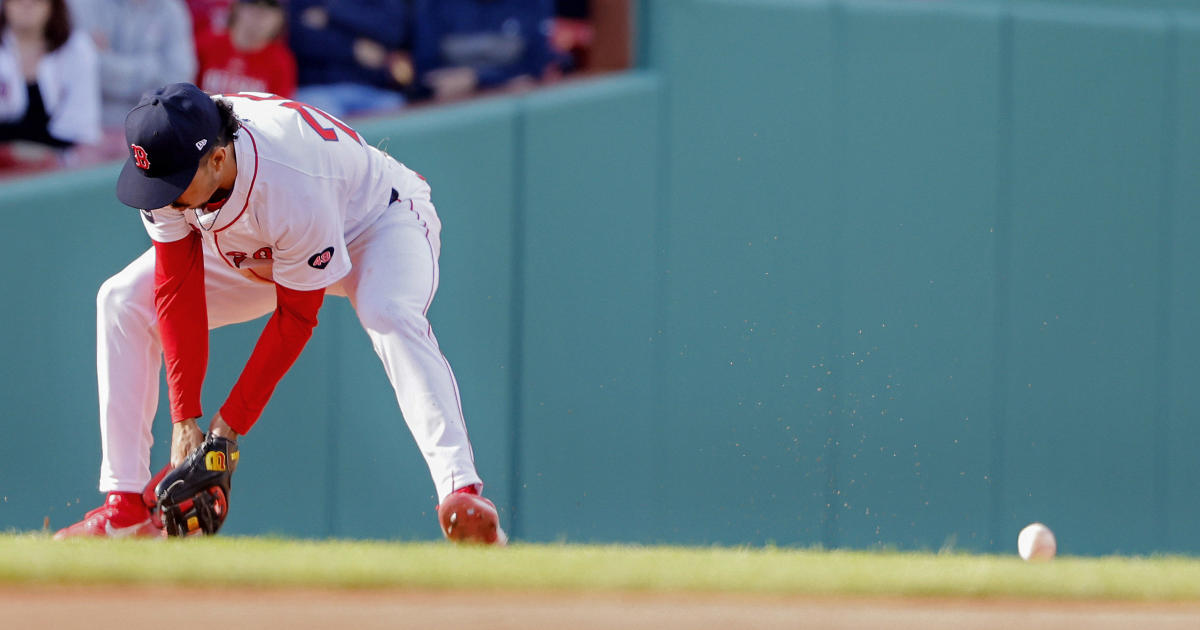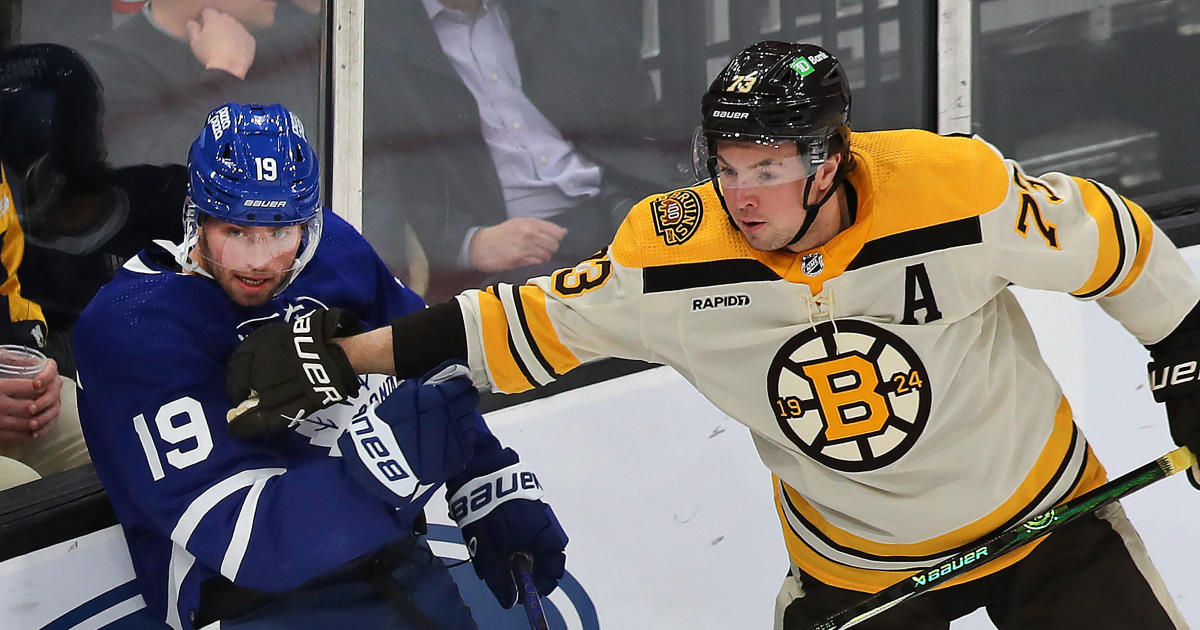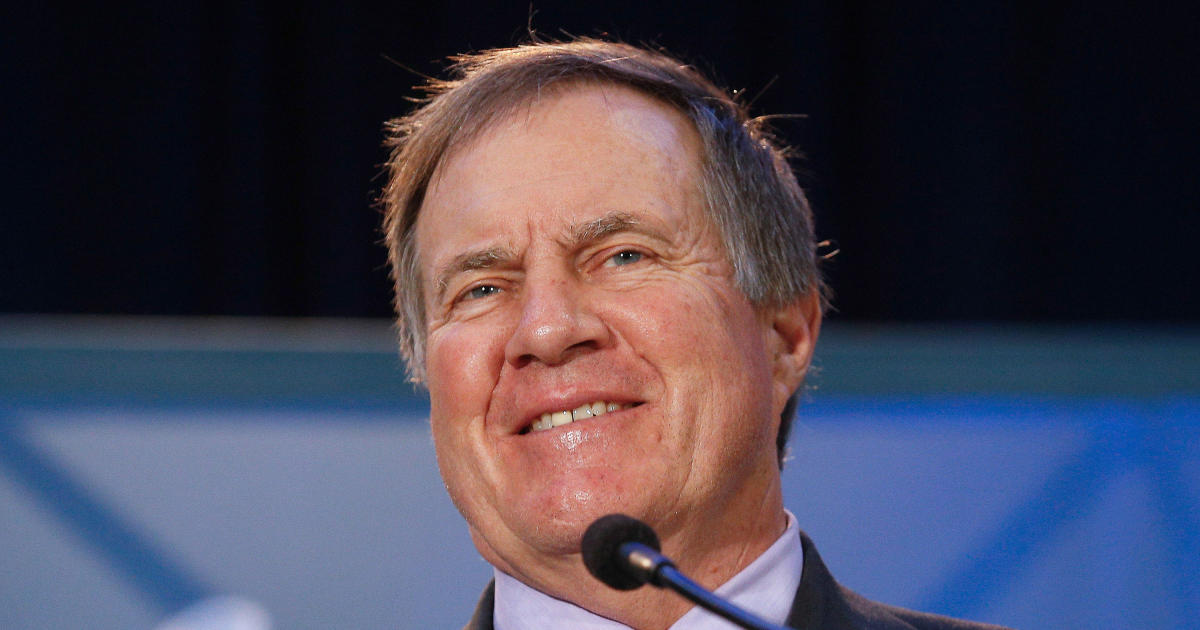Football's Concussion Problem On Full Display This Week
BOSTON (CBS) -- You know, amidst all the yelling and screaming about deflated footballs, and missed calls in the end zone, and daily fantasy sports, and plans for moving a team or two to Los Angeles, and the continued preposterous behavior of the commissioner, it's sometimes easy to forget the fact that football and the NFL still have a rather serious concussion problem.
Last month, when Sony released the trailer for the upcoming "Concussion" film starring Will Smith, the topic certainly surged to the forefront of America's collective conscience. But we are a society that can easily distracted, and we've had plenty of other stuff to keep us talking since then.
But this week, and on Thursday night especially, the NFL's concussion problems came into focus in the national spotlight.
The most egregious instance involved Texans running back Arian Foster. He absorbed a shot to the head while getting tackled by linebacker D'Qwell Jackson in the second quarter of Houston's game against Indianapolis, and he remained down on the field long enough to draw the trainers from the sideline. Play-by-play announcer Jim Nantz said Foster looked woozy. The running back was helped to the sideline, and the protocol for determining a concussion commenced.
But two plays later, Foster decided he was feeling just fine, and he trotted back out onto the field. He was handed the ball and ran directly into this:
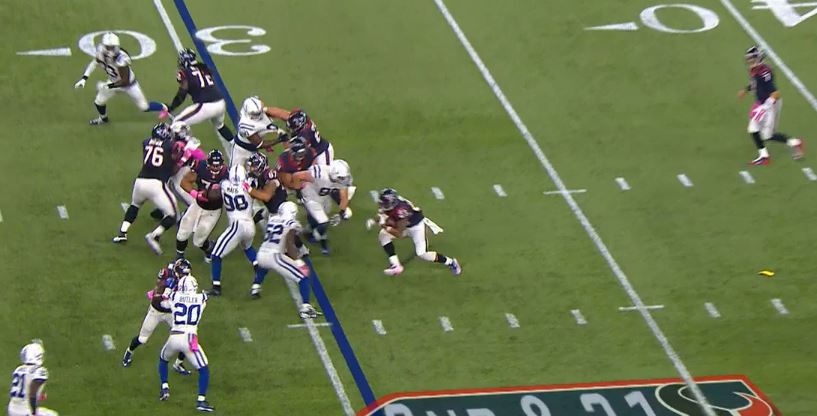 (Screen shot from NFL.com/GamePass)
(Screen shot from NFL.com/GamePass)
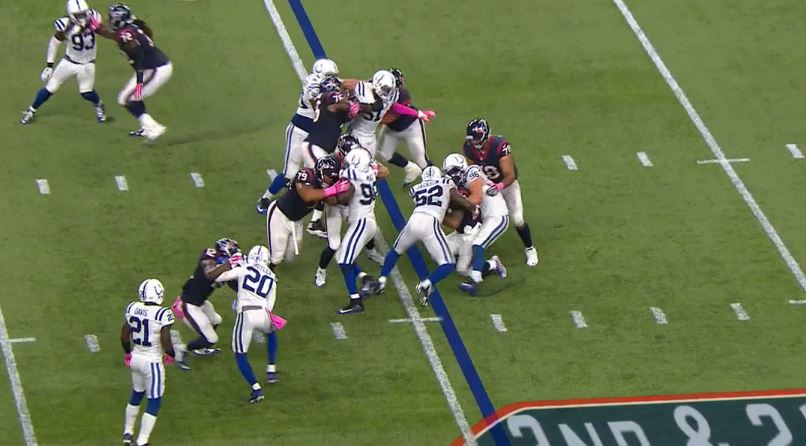 (Screen shot from NFL.com/GamePass)
(Screen shot from NFL.com/GamePass)
He emerged from that tackle without his helmet.

CBS sideline reporter Tracy Wolfson then told us that Foster "basically put himself back into the game. As soon as the trainers were talking about it, he turned around and he just walked back out there."
While Foster was back out on the field, "the independent neurologist [was] watching on the video replay to see the exact hit," Wolfson said.
After that drive, Foster was examined on the bench, because, you know, doctors can do a better of job of evaluating concussion symptoms when they're interacting with a human and not a video replay. After doctors decided to take Foster's helmet from him and bring him into the locker room for further evaluation, he slammed a Gatorade container to the ground.
Being the meme-loving culture that we are, we chuckled, made jokes about the dope on the Pittsburgh Pirates who violently assaulted a Gatorade jug the night before, and the game played on.
Now, given that Foster came back out after halftime and played quite well (six receptions for 66 yards in the second half), it's very possible and even likely that Foster didn't suffer a concussion. But given the complete failure of the league and team employees on the sideline to prevent a potentially concussed player from easily returning to the game, it's more than fair to question the system that's in place.
That's the same system that the NFL has praised during the past offseason. Hell, just one day before Foster's situation, Roger Goodell was talking about the success of the NFL's concussion protocols.
"The changes to our protocols have all resulted to changes in our culture and that is something we're very pleased about," Goodell said Wednesday. "We're seeing a 35 percent reduction the last three years in concussions alone. That is a very positive trend. We have the new medical timeout this year which has been used twice, both times we think protecting our players, which is something that we believe is certainly our priority."
The juxtaposition of those words with the image of Foster smashing into defensive linemen moments after being helped off the field prove the intended message to be fall a bit flat.
It's a continuation of the self-praise in the offseason.
"The athletic trainer is now empowered to stop the game if necessary to give the player the attention he needs," said the NFL's senior vice president of health and safety Jeff Miller, to The Boston Globe. "Concussions and head and neck injuries are really important and they need immediate attention. Therefore that was going to predominate over any potential competitive concerns."
Foster's incident wasn't the only spotlight on the problem on Thursday, either. The game broadcast began with Brian Cushing, a man who is basically a walking and talking concussion, violently headbutting his teammates before the game.
https://vine.co/v/e01DHhVtgPx
It's commonplace, of course, but ... perhaps more aggressive than normal.
Once the game did start, another troubling situation took shape. Though quarterback Ryan Mallett did not suffer a head injury (it seemed like he simply got the wind knocked out of him), he did have to leave the game for a couple of plays. Brian Hoyer entered the game in his place ... and he never left.
For the rest of the night, Mallett was shown sulking on the sidelines, in complete disbelief that he lost his job due to a very brief injury.
Again, Mallett became the target of much ridicule on social media, and perhaps rightfully so. That need not be the issue explored here.
Instead, ask this question: The next time Mallett (or any other QB who was watching Thursday's game) feels hurt, or takes a shot to the head that leaves him a bit dazed, is he going to take a necessary break and head to the sidelines to be checked by doctors? Or is he going to do whatever it takes to preserve his job, health and safety be damned?
Now, the rah-rah machismo men of the world will dismiss such a question and say UNLESS THEY CHOP OFF YER LEGS YOU BETTER STAY IN THAT GAME, SON. THIS AIN'T TAP-DANCIN' CLASS, THIS IS FOOTBALL! And that's their prerogative. But the NFL takes a much different public stance, and the longer the macho culture persists, the more difficult it will be for anyone to take head injuries -- or any injuries -- seriously.
And really, that's what this is. A culture problem. Look only at the special report in Newsday this week, which spotlighted concussions in Long Island high school football. The entire report is filled with some eye-opening facts and figures, but the direct quotes from one high school coach speak volumes about the archaic beliefs about brain injuries that still dominate the sport.
From the report: "Jay Hegi, head football coach in Elmont for 14 years and a coach for 31, remembers only one player ever suffering a concussion, and it was '13 or 14 years ago.' ... Hegi said Elmont is one of the eight Nassau high schools that doesn't have an athletic trainer, which he doesn't think affects their concussion reporting."
Hegi said, "A coach, if he's been around the sport, he can tell if a kid is dizzy or not. I don't think a trainer is going to make a difference. Me personally, I can tell. Obviously a trainer is more qualified, but I can tell when a kid is not standing up straight."
That's a man in charge of bringing up the next generation of football players. A man in charge of teenagers.
It's alarming, to say the least.
Also these two facts, rearranged to stand side-by-side, show the serious flaws in the reporting of concussions:
"A typical high school football player receives about 650 hits to the head per season, according to researchers at Purdue University and the University of Michigan. The impacts of those hits are the equivalent of what a seat-belted passenger experiences in car accidents ranging from 15-to-35 mph."
"There were 14 high schools that said they had no football players suffer concussions on any of their teams, including varsity, junior varsity and freshman."
Some quick math would say that if there are 40 players on every team (a very low estimate), that would mean that 560 high school players in those 14 schools combined to receive 36,400 hits to the head. Yet none suffered a concussion.
That's an issue.
This isn't necessarily anything new. Football is a sport that poses inherent risks. It asks men -- and young men, and teenagers, and children -- to run at full speed directly into each other. There is no piece of protective equipment that can prevent injuries, and that includes helmets.
The end result of those collisions is a captivating spectacle, one that captures our attention for hours at a time every Sunday, Monday and Thursday. There's no denying the appeal.
But there's also no denying the problem. This week provided yet another crystal clear picture that it extends from the professional level all the way down through high schools.
There's no simple solution, but there's no doubt that more can be done to at least attempt to curb football's concussion problem.
Read more from Michael Hurley by clicking here. You can email him or find him on Twitter @michaelFhurley.
